You know how we all love adobo, right? It's that dish we can eat every day and never get tired of. Well, today I'm sharing a special twist on our favorite ulam - instead of the usual chicken or pork, we're using duck (pato). Don't worry if you've never cooked duck before. If you can make regular adobo, you can make this one, too.
What makes this adobong pato extra special is how the rich duck meat soaks up all that yummy adobo sauce. And here's a fun secret: we're adding Sprite. It helps make the meat super tender and adds a tiny bit of sweetness that makes everything taste even better.
Ready to give it a try? I promise it's easier than you think!
Jump to:
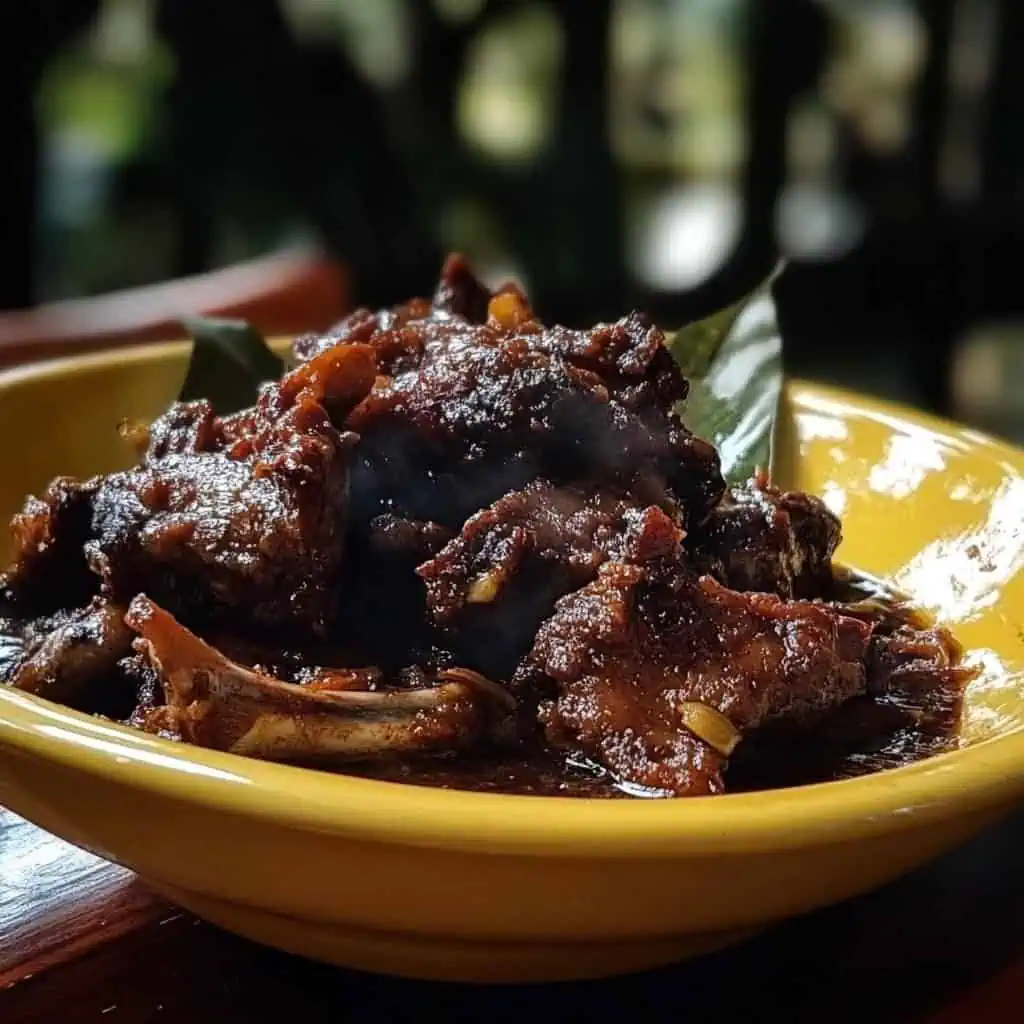
Why You'll Love This Recipe
- Duck meat creates a richer, more luxurious version of the classic adobo
- The Sprite adds a subtle sweetness and helps tenderize the meat
- Perfect balance of savory, tangy, and slightly sweet flavors
- Makes impressive leftovers as flavors deepen overnight
- One-pot dish that's perfect for special occasions
Ingredients
This recipe combines classic Filipino adobo elements (vinegar, soy sauce, garlic) with duck meat and Sprite for a reason. The rich, gamey duck stands up perfectly to the bold adobo flavors, while vinegar tenderizes and preserves the meat.
Sprite adds necessary sweetness to balance the strong flavors and helps break down the naturally tougher duck meat. Garlic, onion, and bay leaves create a fragrant base, while black pepper adds subtle heat that complements without overwhelming.
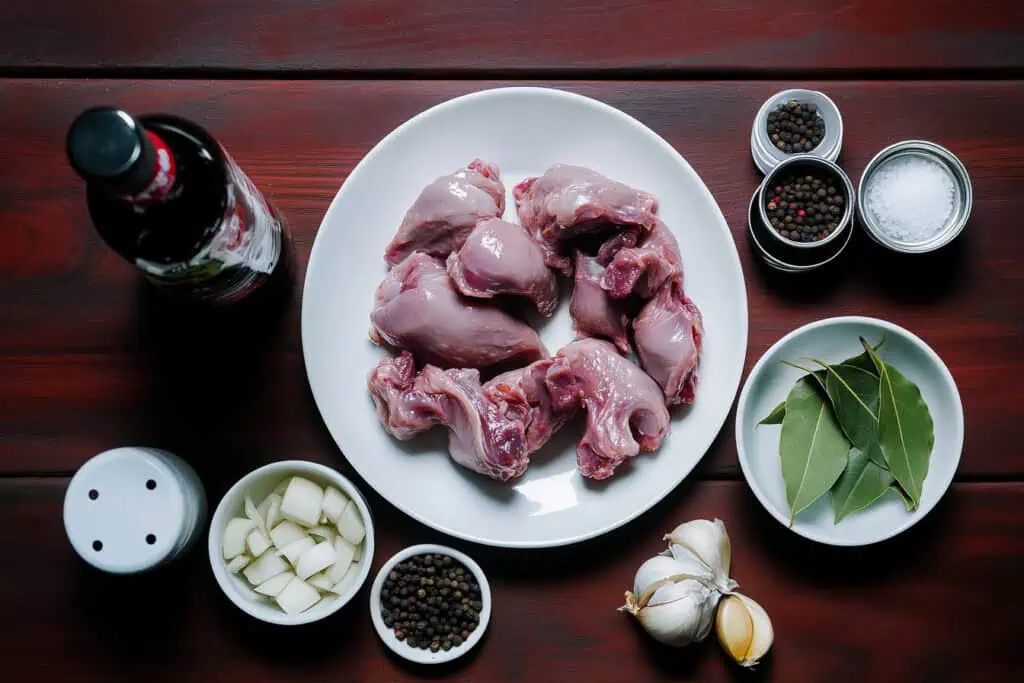
- 1 whole duck, cleaned and cut into serving pieces
- 4 cloves garlic, minced
- 1 medium onion, minced
- ¼ cup vinegar
- ½ cup soy sauce
- 2 cups Sprite
- ¼ teaspoon ground black pepper
- 3-4 bay leaves
- Salt or fish sauce (patis) to taste
- 2 tablespoons cooking oil (optional, for initial browning)
Equipment
- Large heavy-bottomed pan or Dutch oven: For even heat distribution and to prevent burning
- Sharp knife: For properly cutting and preparing the duck
- Cutting board: For safe meat preparation and to protect your countertops
- Measuring cups and spoons: For accurate measurements of ingredients
- Tongs: For safely turning and handling the hot duck pieces
- Wooden spoon: For stirring without scratching your cookware
- Paper towels: For patting the duck dry before cooking
- Meat thermometer (optional): To ensure duck is fully cooked (165°F/74°C internal temperature)
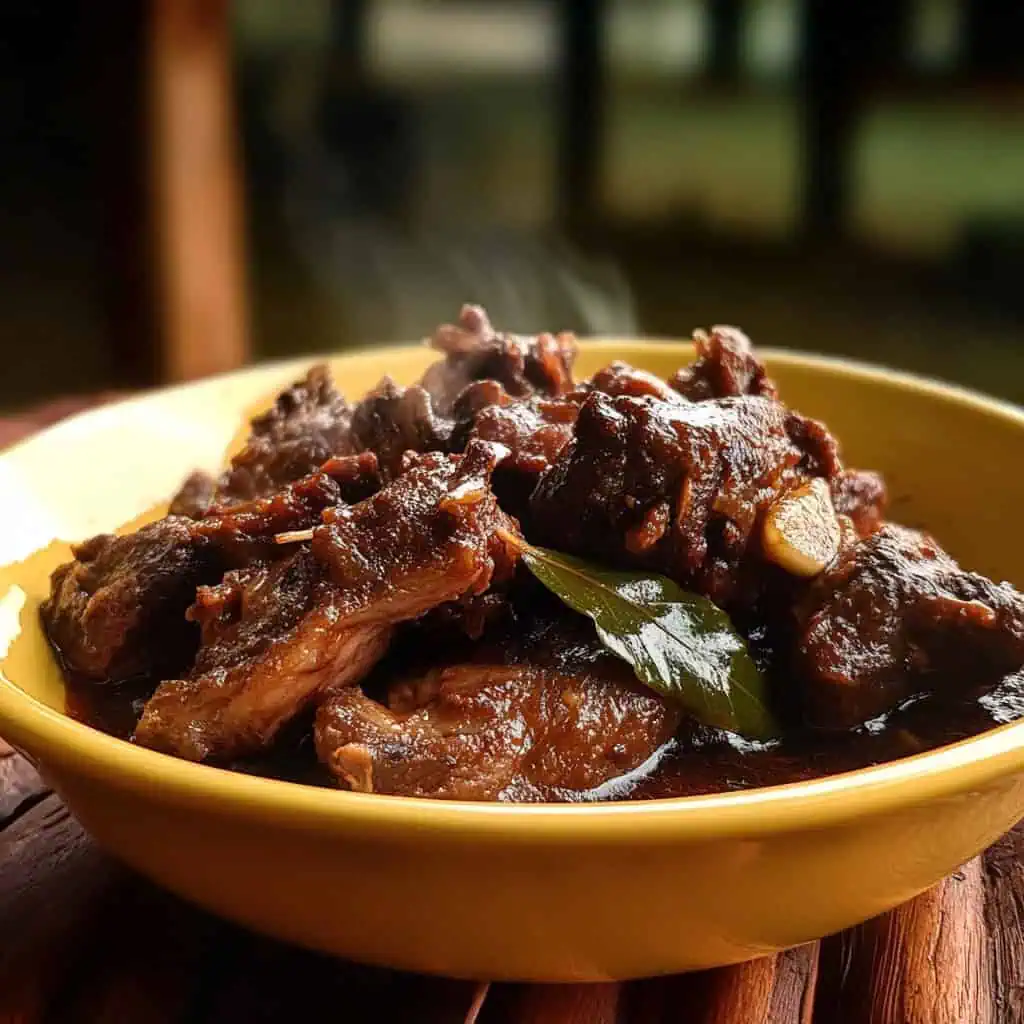
How To Make
- Clean your duck thoroughly and pat it dry with paper towels. Cut it into serving pieces, about 2 inches each, and let it come to room temperature (about 30 minutes). While waiting, mince your garlic and onion.
- Heat your pan over medium heat. Once hot, sauté the minced garlic and onion until the onions become translucent and soft, about 3-4 minutes. Add your duck pieces and continue to sauté until the meat turns slightly white in color, which takes about 8-10 minutes.
- Pour in the vinegar and let it cook without stirring for 2-3 minutes – this helps cook off the strong vinegar smell. After this, add your soy sauce, bay leaves, and sprinkle in the ground pepper. Let this simmer for 10 minutes so the soy sauce color spreads evenly through the meat.
- Pour in the Sprite and wait for the liquid to boil. Once boiling, lower the heat and cover the pan. Let it simmer for 45-60 minutes, or until you can easily pierce the meat with a fork. Check occasionally and add a splash of water if needed.
- Taste your adobo and season with salt or patis if needed. Let it simmer for 5 more minutes on low heat. Turn off the heat and let your adobo rest for 10 minutes before serving – this helps the meat soak up more flavor.
- Serve hot with steaming white rice. You can pour extra sauce over your rice and garnish with toasted garlic if you like.
Note for beginners: The duck is ready when the meat easily comes off the bone and the sauce has thickened slightly. If your sauce is too thin, you can simmer it uncovered for a few extra minutes.

Tips from Lola's Kitchen
- Prepare the duck properly: Score the duck skin with shallow cuts to help render fat and allow flavors to penetrate better.
- Don't rush the cooking process: Duck needs time to become tender. Low and slow is the key.
- Let the vinegar cook undisturbed: Always let the vinegar cook without stirring initially (2-3 minutes) to achieve the right adobo flavor and remove the harsh acidic taste.
- Save the duck fat: The rendered duck fat is liquid gold! Strain and save it for cooking other dishes like fried rice or roasted vegetables.
- Marinate for deeper flavor: For even better results, marinate the duck in the soy sauce, vinegar, and garlic mixture for 1-2 hours before cooking.
- Make it ahead: The flavor improves overnight as the meat absorbs more of the sauce. Cook a day ahead and reheat before serving for the best taste experience.
- Balance is key: The perfect adobo has a balance of salty, sour, and slightly sweet notes. Taste and adjust accordingly.
Substitutions
- Sprite: You can use 7-Up, lemon-lime soda, or make a simple sugar water (2 cups water + 2 tablespoons sugar + 1 tablespoon lemon juice)
- White vinegar: Apple cider vinegar, rice vinegar, or coconut vinegar work well (each brings a slightly different flavor profile)
- Regular soy sauce: Light soy sauce can be used (reduce amount by about 2 tablespoons)
- Fresh garlic: Garlic powder can be used in a pinch (1 teaspoon equals about 4 fresh cloves)
- Fresh bay leaves: Dried bay leaves work fine (use 2 instead of 3-4)
- Whole duck: Duck legs or thighs can be used instead of a whole duck
- Duck: While not traditional, this recipe can be adapted for chicken (reduce cooking time to about 45 minutes)
Troubleshooting
- Duck is tough: Continue simmering on low heat until tender, adding a bit more Sprite or water if liquid reduces too much. Duck should be fork-tender when done.
- Sauce is too thin: Remove the lid and simmer uncovered for 10-15 minutes to reduce the sauce to your desired consistency.
- Sauce is too thick: Add a splash of water or more Sprite and simmer for a few minutes.
- Too salty: Add a quartered potato to absorb excess salt (remove before serving), or balance with a splash more vinegar or Sprite.
- Too sour: Add a bit more Sprite or a pinch of sugar to balance the acidity.
- Duck skin isn't crispy: For crispy skin, you can briefly broil the duck pieces for 2-3 minutes after cooking, or pan-sear skin-side down before serving.
Storage & Reheating
- Refrigerator: Store in an airtight container for up to 4 days. The flavor actually improves after a day in the refrigerator!
- Freezer: Can be frozen for up to 3 months in freezer-safe containers. Thaw overnight in the refrigerator before reheating.
- Reheating on stovetop: Place in a pan with a splash of water and heat over medium-low heat until hot throughout (about 10 minutes).
- Reheating in microwave: Heat in 1-minute intervals at 70% power, stirring between intervals until heated through.
- Best reheating method: Reheat in a pan with a little oil to crisp up the skin while warming the meat through.
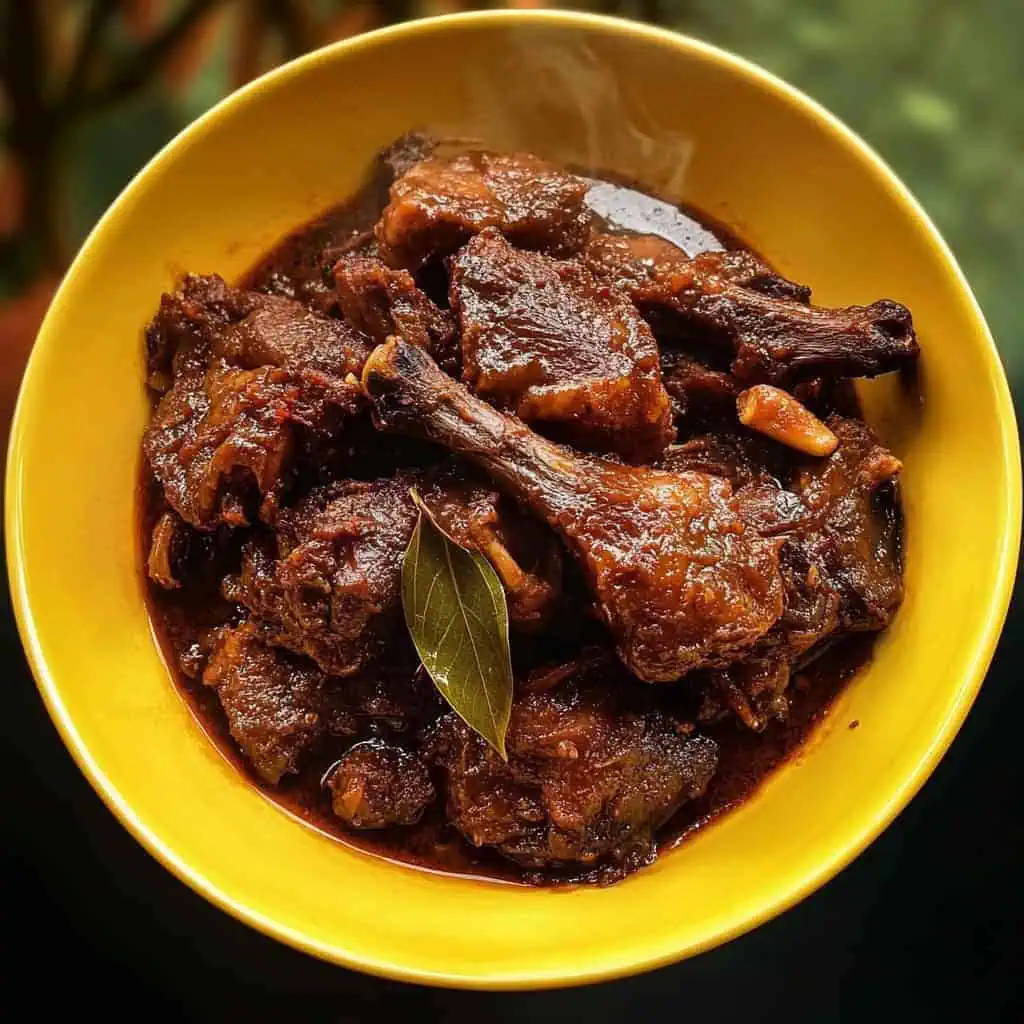
FAQ
Why use Sprite in adobo?
Sprite serves multiple purposes: it helps tenderize the meat through its acidity, adds a subtle sweetness that balances the salty-sour flavors, and the carbonation helps break down the meat fibers. The result is more tender duck with a more complex flavor profile.
Can I make this in advance?
Absolutely! The flavor actually improves overnight as the meat absorbs more of the sauce. Many Filipino families make adobo a day ahead for this reason. Just store it properly in the refrigerator and reheat before serving.
How do I know when the duck is done?
The duck is done when the meat easily comes off the bone and is fork-tender. You should be able to pierce it easily with a fork. For food safety, the internal temperature should reach 165°F (74°C).
Can I use this recipe for other meats?
Yes, this recipe works well with chicken (45 minutes cooking time), pork (1 hour cooking time), or even a combination. Each meat will give a different flavor profile but the same delicious adobo experience.
Why isn't my sauce darkening?
Different soy sauce brands vary in color intensity. Focus on the taste rather than the color. If you want a darker sauce, you can use dark soy sauce for half of the soy sauce amount, but this will alter the flavor slightly.
Is this dish supposed to be soupy or dry?
Traditional adobo can range from soupy to dry, depending on regional or family preferences. This recipe creates a moderate amount of sauce, but you can reduce it further for a drier version or keep it as is for more sauce to pour over rice.
Can I add vegetables to this dish?
Yes! Common additions include potatoes, carrots, or hard-boiled eggs added in the last 15-20 minutes of cooking. These will absorb the flavors while adding more substance to the dish.
What's the best rice to serve with Adobong Pato?
Jasmine rice or any long-grain white rice works perfectly. The slightly sticky texture helps it soak up the delicious adobo sauce.
Related
Looking for other recipes like this? Try these:
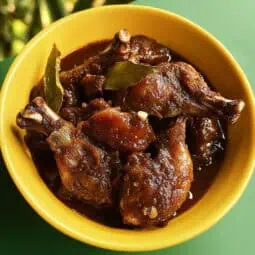
Adobong Pato (Filipino Duck Adobo)
Equipment
- Large heavy-bottomed pan or Dutch oven (Kaldero) For even heat distribution
- Sharp knife (kutsilyo) For preparing the duck
- Cutting board (Sangkalan) For safe meat preparation
- Measuring cups and spoons For accurate measurements
- Tongs For turning the meat safely
- Wooden spoon (sandok na kahoy) For stirring without scratching the pan
Ingredients
- 1 whole duck Pato, cleaned and cut into serving pieces
- 4 cloves garlic Bawang, minced
- 1 medium onion Sibuyas, minced
- ¼ cup vinegar Suka
- ½ cup soy sauce Toyo
- 2 cups Sprite
- ¼ teaspoon ground black pepper Paminta
- 3-4 bay leaves Dahon ng laurel
- Salt Asin or fish sauce (Patis) to taste
Instructions
- Clean your duck thoroughly and pat it dry with paper towels. Cut it into serving pieces, about 2 inches each, and let it come to room temperature. While waiting, mince your garlic and onion.
- Heat your pan over medium heat (180°C/350°F). Once hot, sauté the minced garlic and onion until the onions become clear and soft, about 3-4 minutes. Add your duck pieces and continue to sauté until the meat turns slightly white in color, which takes about 8-10 minutes.
- Pour in the vinegar and let it cook without stirring for 2-3 minutes – this helps cook off the strong vinegar smell. After this, add your soy sauce, bay leaves, and sprinkle in the ground pepper. Let this simmer for 10 minutes so the soy sauce color spreads evenly through the meat.
- Pour in the Sprite and wait for the liquid to boil. Once boiling, lower the heat (140°C/285°F) and cover the pan. Let it simmer for 45-60 minutes, or until you can easily pierce the meat with a fork. Check occasionally and add a splash of water if needed.
- Taste your adobo and season with salt or patis if needed. Let it simmer for 5 more minutes on low heat. Turn off the heat and let your adobo rest for 10 minutes before serving – this helps the meat soak up more flavor.
- Serve hot with steaming white rice. You can pour extra sauce over your rice and garnish with toasted garlic if you like.
- Note for beginners: The duck is ready when the meat easily comes off the bone and the sauce has thickened slightly. If your sauce is too thin, you can simmer it uncovered for a few extra minutes.
Tips from Lola's Kitchen
- Always let the vinegar cook without stirring initially to achieve the right adobo flavor
- Score the duck skin to help render fat and absorb flavors better
- Don't rush the simmering process - tender meat takes time
- Save rendered duck fat for cooking other dishes
- For best results, cook a day ahead and reheat before serving
Nutrition
The Story Behind Adobong Pato
Growing up in Filipino kitchens, adobo has always been our go-to comfort food. While most families treasure their chicken or pork adobo recipes, duck adobo (Adobong Pato) tells a different story of Filipino ingenuity and resourcefulness. This variation emerged from rural communities where ducks were more readily available than chickens, particularly in regions near rice fields where ducks helped farmers by eating pests.
The dish showcases how our ancestors adapted the classic adobo technique to work with different meats. Duck meat, being naturally richer and more flavorful than chicken, required slight adjustments to the traditional adobo method. Cooks discovered that the meat's natural richness paired beautifully with the signature adobo sauce of vinegar, soy sauce, and garlic.
What makes this version special is the modern addition of Sprite – a trick many Filipino home cooks now swear by. This isn't just for sweetness; the carbonated drink helps tenderize the naturally tougher duck meat. This clever adaptation shows how Filipino cooking continues to evolve while honoring traditional methods.
Today, Adobong Pato is considered a premium version of the everyday adobo. You'll often find it served during fiestas, special gatherings, or when families want to make ordinary days extraordinary. It's a perfect example of how Filipino cuisine can be both humble and sophisticated, using simple ingredients and techniques to create something truly special.
While less common than its chicken or pork counterparts, duck adobo has earned its place in Filipino kitchens as a dish that bridges the gap between everyday cooking and special occasions. Whether enjoyed with family on a Sunday or served to honored guests, Adobong Pato continues to tell the story of Filipino culinary creativity and our love for good food shared with loved ones.
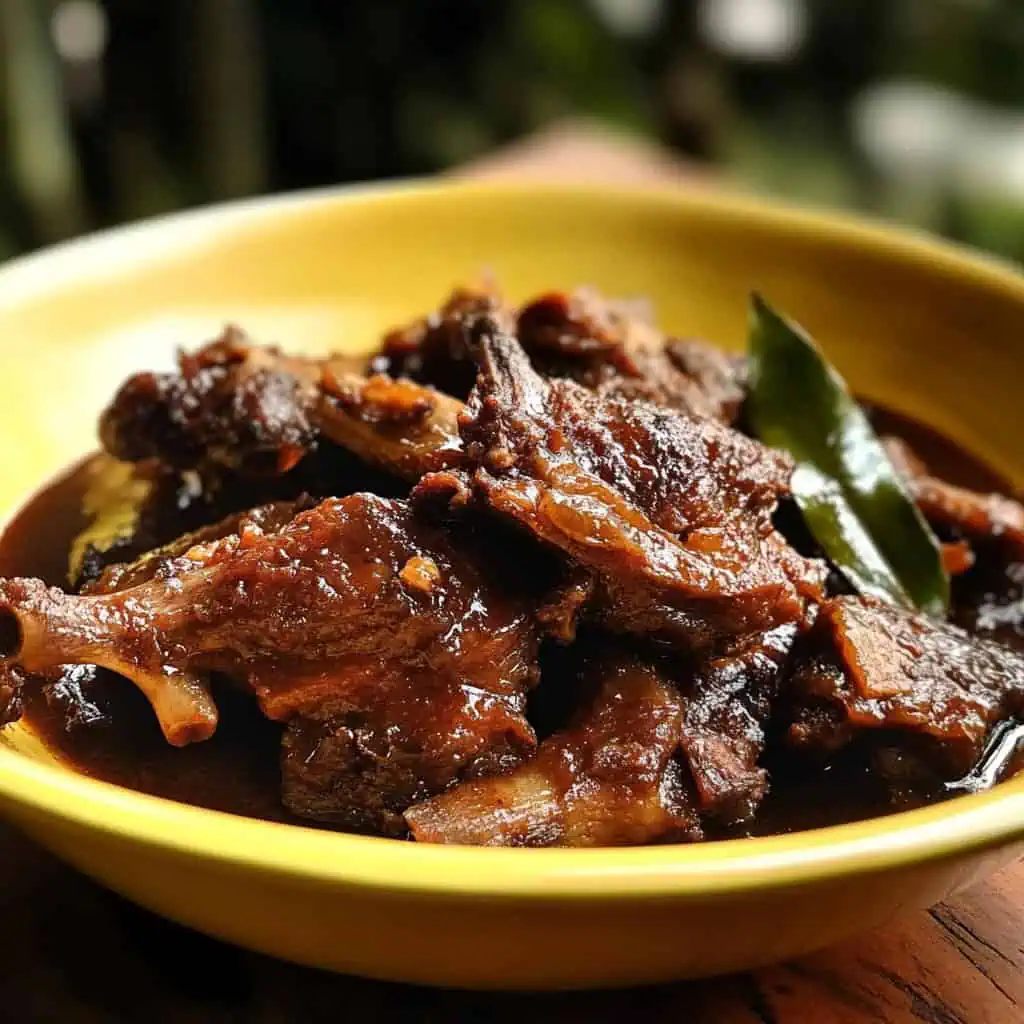

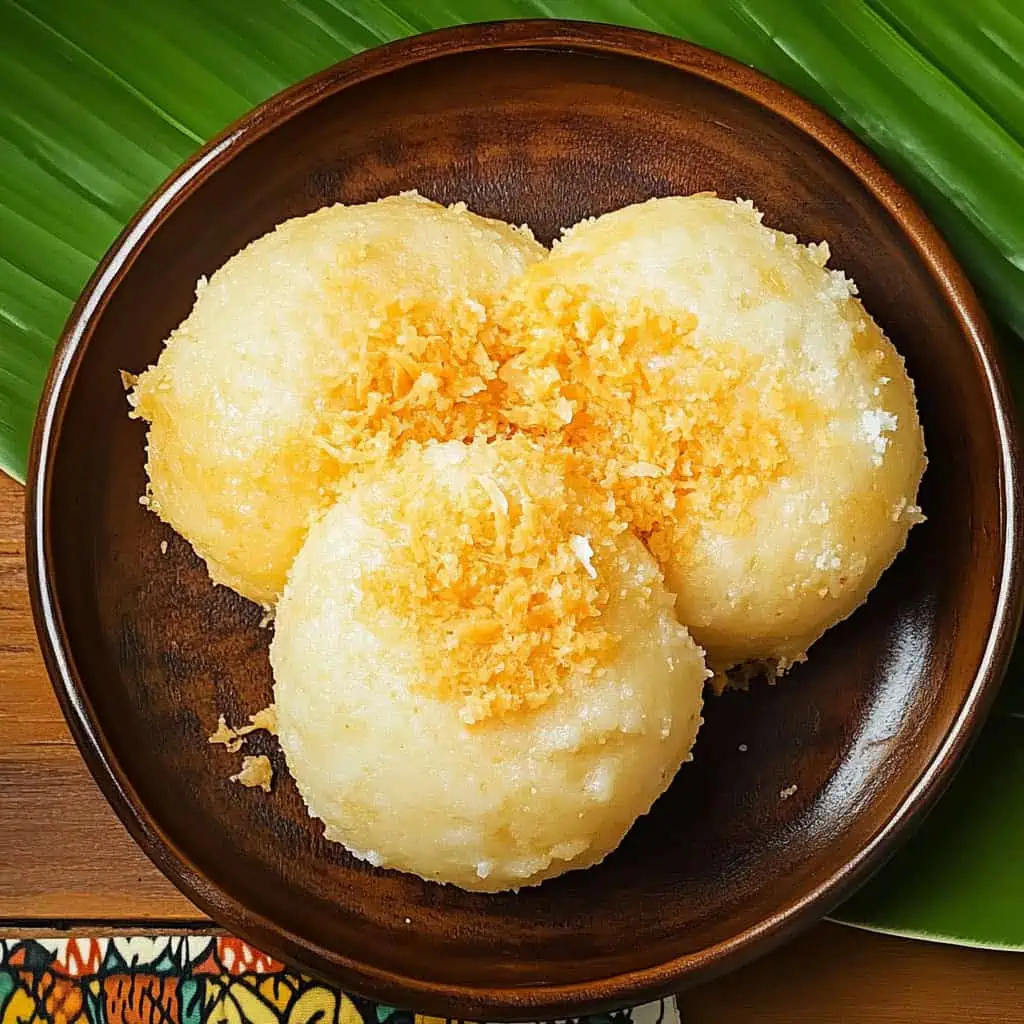
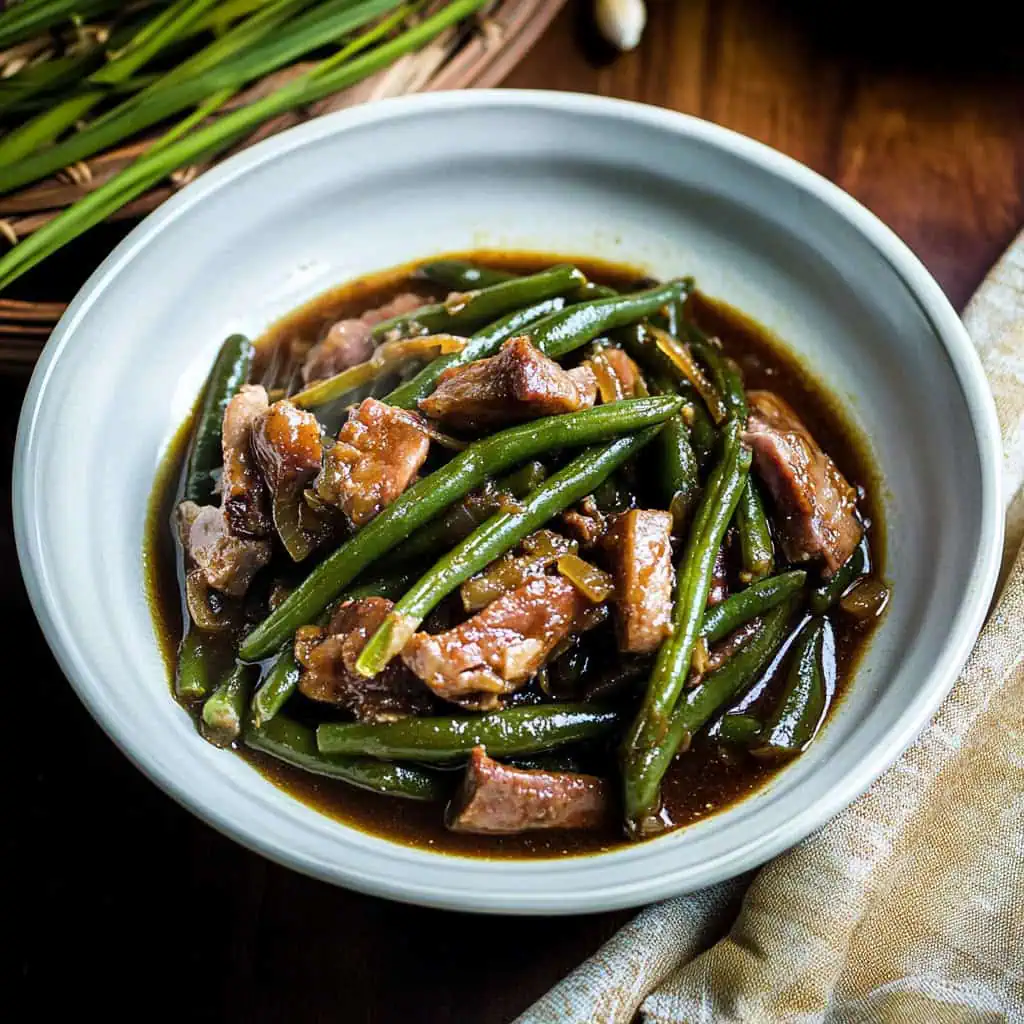
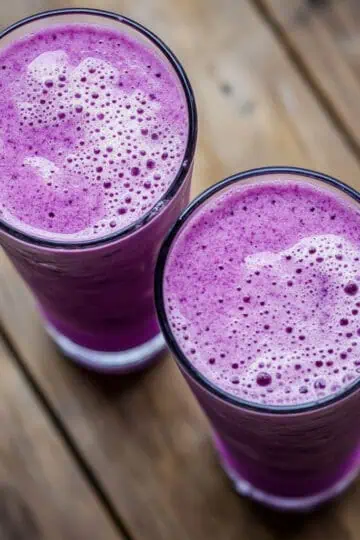
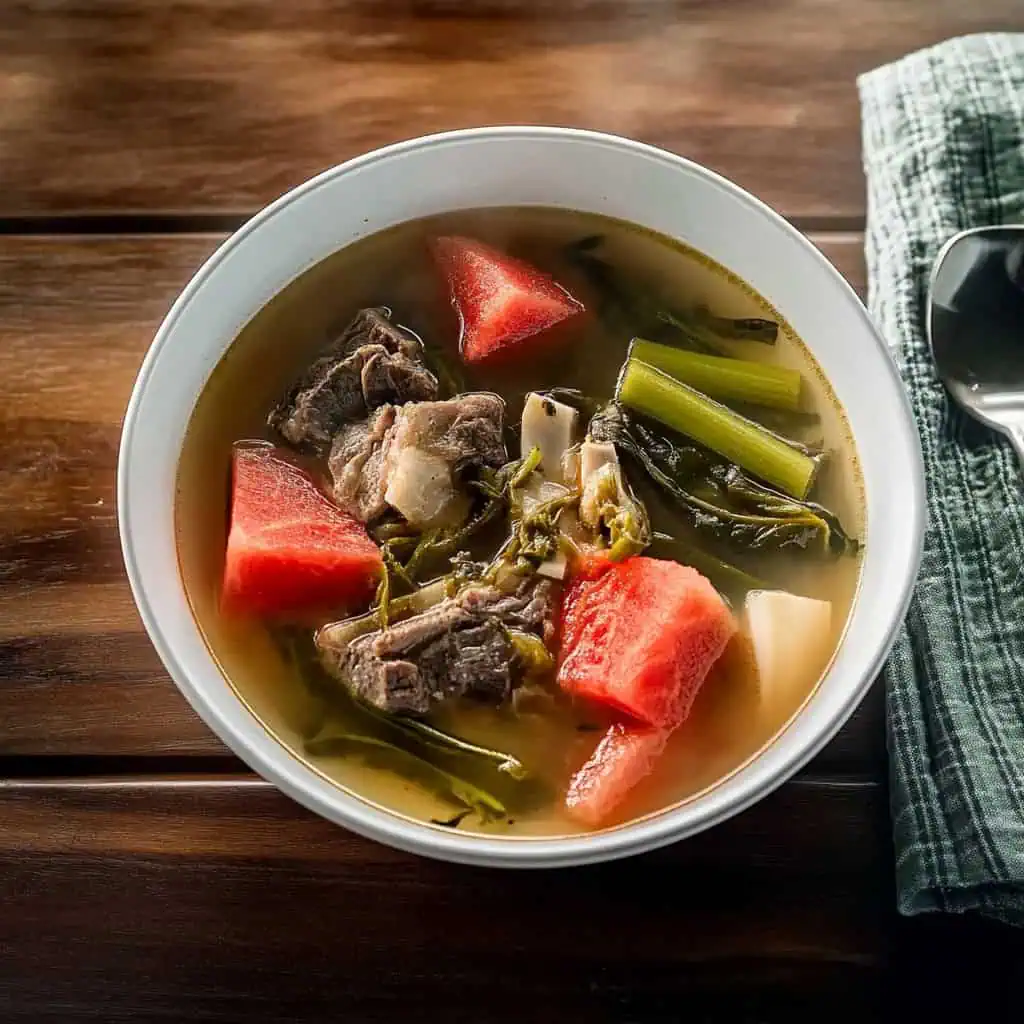
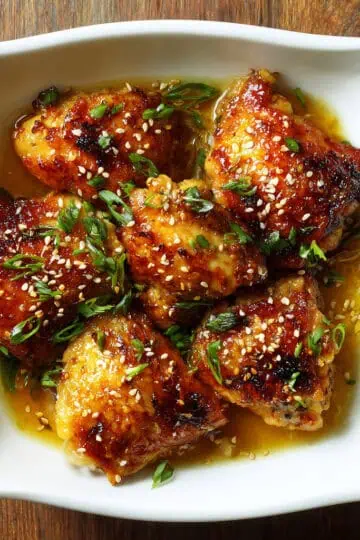
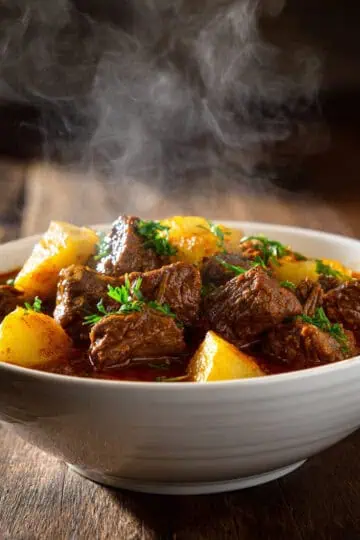
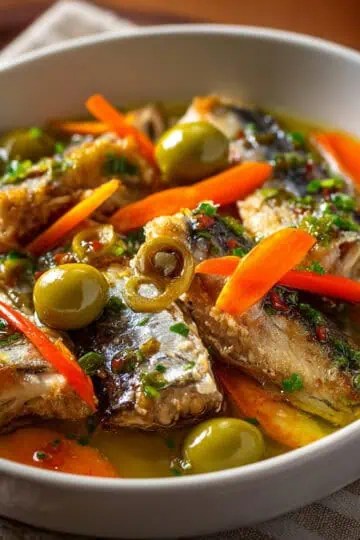
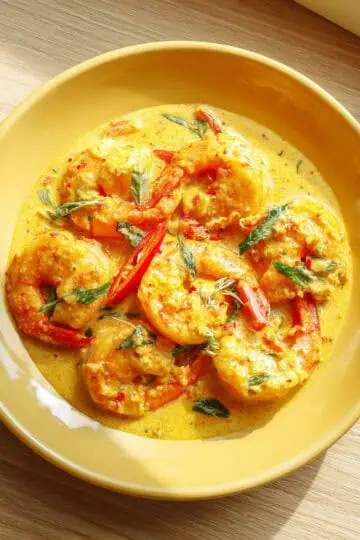
Comments
No Comments